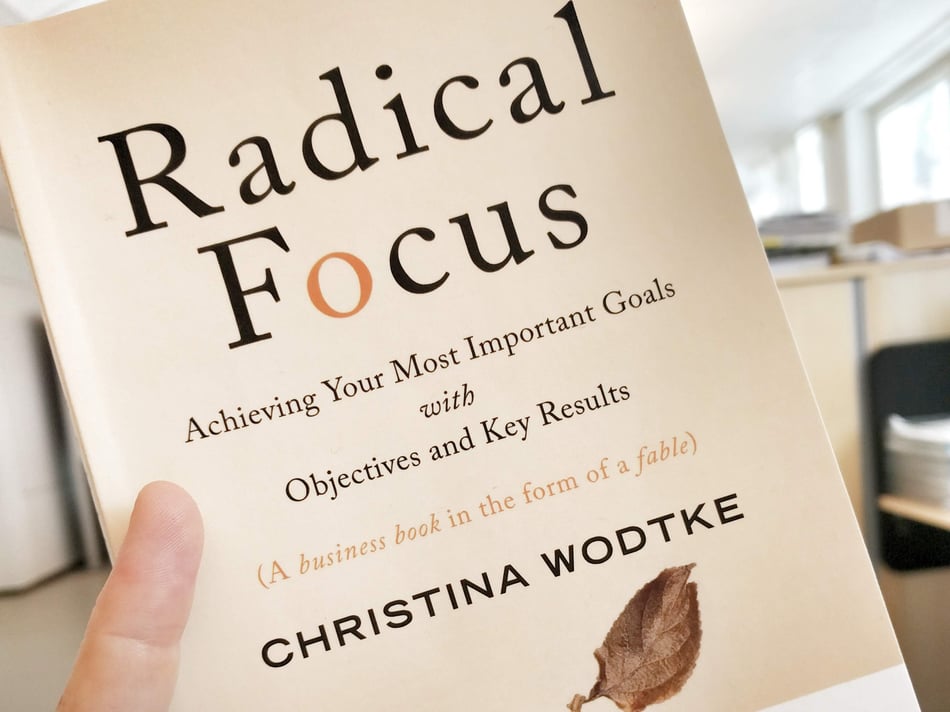SOKR Documentation
-
Getting Started
-
Getting the most out of SOKR
- How are OKRs different from KPIs?
- Constructing a Task Statement that gets done
- How to set good Objectives
- How to write a good Vision statement
- How to write a mission statement
- Managing personal tasks using OKRs
- The Quarterly Review
- The Weekly Review - Best practices
- What is review cadence and why is it important in the OKR process?
-
SOKR Blog
- The Flawed thinking behind Employee Engagement
- Radical Focus by Christina Wodtke - and why you should read it!
- OKR - Principles of a Successful Rollout
- OKR Alignment with Individual Performance: Practical Strategies for Performance Management
- OKRs is not the same as WBS
- Mastering OKRs: Understanding the Difference between Outcomes and Outputs
- Unlocking the Secret to Measuring the Success of Your OKRs
- Unleashing Human Potential: Autonomy, Mastery, and Purpose Amplified through Objectives and Key Results
- OKRs for Innovation: How to Drive Change in Your Company
- Commit, Target, Stretch: A Model for Classifying Key Results
- Transforming Underperforming Employees with OKRs
- OKRs vs KPIs: What’s the Difference?
- Leveraging OKRs for Technology Adoption : Driving Innovation and Implementation
- OKRs in Startup Culture: Fueling Rapid Growth through Clear Goals
- OKRs in Machine Learning and AI Projects: Driving Successful Outcomes with Focus and Alignment
- OKRs for Cybersecurity: Enhancing Risk Management and Resilience
- OKR Trends and Future Outlook: Unveiling Emerging Advancements and Predictions
- Metrics vs Outcomes: Understanding the Difference in OKR Implementation
- OKRs for Technical Debt Reduction: Prioritizing and Addressing Software Development Challenges
- How to Use OKRs for Managing Sales Goals: A Recipe for Success
- Leveraging OKRs for Effective HR Goal Management: Empowering Your Human Capital
- Leveraging OKRs to Manage Research and Development Goals
- OKRs in Sales and Marketing: Boosting Revenue and Customer Engagement
- OKRs for Career Growth: Setting Professional Goals and Advancing Your Career
- OKRs for Product Development: Navigating the Path to Product Excellence
- Beyond Google: How OKRs Are Transforming Businesses Across Industries
- OKRs in Nonprofits: Driving Impact and Achieving Social Goals
- OKRs for Diversity and Inclusion: Fostering Equality and Belonging in the Workplace
- OKRs and Corporate Social Responsibility: Making a Difference Beyond Profits
- OKRs for Remote Teams: A Blueprint for Success in a Distributed Work Environment
- The Role of OKRs in Strategic Planning: Aligning Objectives with Your Vision
- OKRs and Employee Engagement: Motivating Teams to Reach New Heights
- OKRs in Government: Enhancing Public Service and Accountability
- Innovation and OKRs: Fostering a Culture of Creativity and Progress
- OKRs for Software Development: Optimizing Agile Project Management
- Show Remaining Articles ( 20 ) Collapse Articles
Table of Contents
Print
Radical Focus by Christina Wodtke – and why you should read it!

If you’re a CEO or a small business owner, setting and achieving ambitious goals is critical to your success. However, goal-setting can be challenging, and many people struggle to turn their dreams into reality.
“Radical Focus” by Christina Wodtke is a book you definitely must read if you are in the space of setting goals – whether for yourself or for your team. In this book, Wodtke provides a step-by-step guide on how to set effective goals using the OKR (Objectives and Key Results) framework.
Outcome Based Goals
One of the key takeaways from “Radical Focus” is the importance of setting outcome-based goals. As Wodtke puts it, “Outputs are what you produce. Outcomes are what you deliver. And outcomes matter more.” By focusing on the impact you want to create, rather than just the things you want to accomplish, you can align your efforts with the mission and values of your organization, and achieve meaningful results that make a difference.
Measurable and Achievable Key Results
Another key takeaway from the book is the importance of setting measurable and achievable key results. Wodtke advises, “If you can’t measure it, you can’t manage it.” By setting specific, time-bound, and challenging yet realistic key results, you can ensure that your goals are achievable and that you’re making progress toward them.
Regular Check-ins
The book also emphasizes the importance of regularly tracking and reviewing progress toward your OKRs, and making adjustments as needed. As Wodtke notes, “The point of the check-in is to look at the results and to see what’s working and what’s not. It’s about learning, not judgment.” By being willing to learn from failure and make adjustments as needed, you can continually improve your processes and achieve better results.
Real Life Examples
One of the most compelling aspects of “Radical Focus” is the use of real-life examples to illustrate the power of OKRs. Wodtke provides case studies of companies such as Google and Zynga, as well as smaller startups, that have successfully implemented OKRs to achieve their goals. By showing how real-life organizations have used OKRs to drive success, the book provides a powerful argument for why you should adopt this framework.
Transparency, Accountability and Continuous Learning
Finally, “Radical Focus” emphasizes the importance of creating a culture of transparency, accountability, and continuous learning within your organization. As Wodtke writes, “Accountability is not punishment, it’s a recognition that we’re in this together.” By creating an environment where individuals and teams feel empowered to take risks and innovate, you can create a culture of openness and learning that can drive long-term success.
Conclusion
In conclusion, “Radical Focus” is a must-read for CEOs and small business owners who are looking to set and achieve ambitious goals. By providing a clear and concise framework for setting effective OKRs, and using real-life examples to illustrate the power of this approach, Wodtke shows how you can turn your dreams into reality. So why not give it a read? As Wodtke herself puts it, “The best way to predict the future is to create it.”
